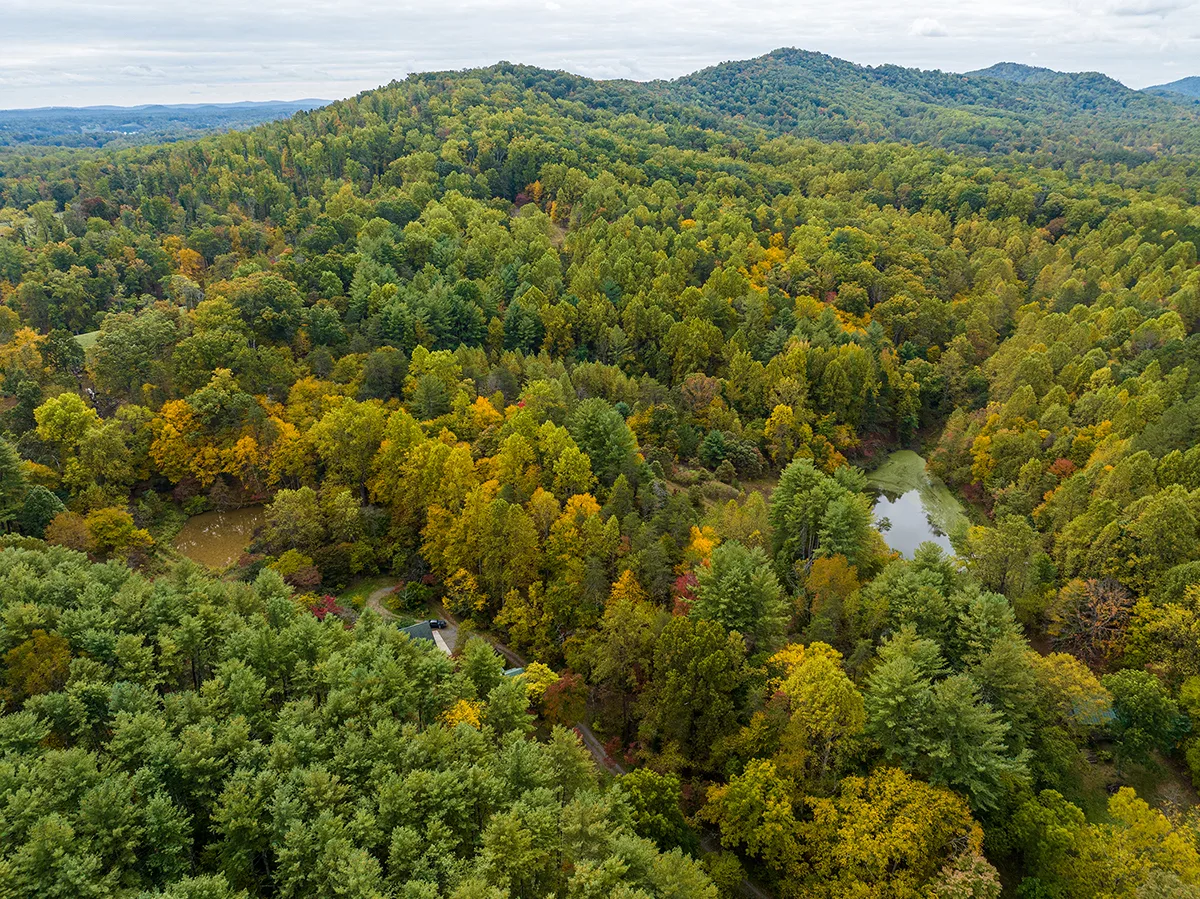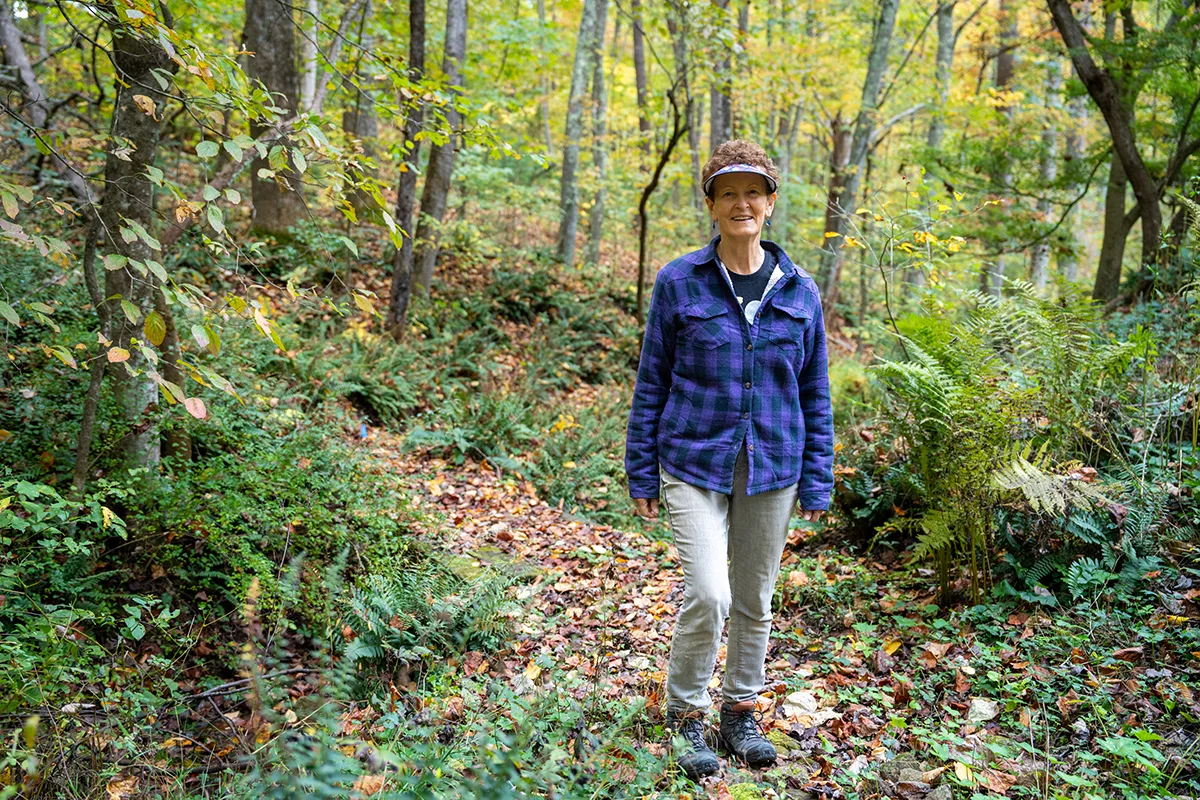Carolyn Smith’s Madison County property has been on quite the journey since her parents first purchased the former cattle operation in 1965. Donating a 129-acre conservation easement in late 2023 came on the heels of decades of successful land stewardship by Carolyn, her parents, and a community of partners who have worked to restore and repair the land for wildlife habitat, pollinators and native plants.
“Every cool conservation organization under the sun has had a part at Carolyn Smith’s property, so I think [her property] is a great way to showcase how all these partners come together,” said PEC Rappahannock-Rapidan Conservation Coordinator Maggi Blomstrom.

It was Friends of the Rappahannock Deputy Director Bryan Hofmann who first introduced Carolyn to The Piedmont Environmental Council, while they were planting trees on her property. He told her PEC could assist with the conservation easement that she, and her parents before her, had been thinking about for years.
Back in 1965, Carolyn’s parents’ focus their first year in Madison was just to ramble over the acreage and get to know it. They found beautiful, native ephemerals in bloom, but lots of erosion and ravines from the cattle that used to graze the fields. So, they began the process of rejuvenation by turning to their Madison County Virginia Cooperative Extension agent and a local forester for help.
“Because my parents loved nature and loved to be out of doors, they had a sense that they could improve the land,” Carolyn said. “Their appreciation of the beauty of the natural world and the interconnectedness of life [led them to] understand that what they did on the land and with the land would have impacts on a ton of other species.
“For them it was a physical, mental, spiritual replenishing nourishment to come down here on the weekends [before they moved down full time post-retirement], so any idea of building something or turning it into something else wasn’t in the picture; it was just about nature,” she said.
In the five decades between when Carolyn first floated on the ponds and played in the tree houses her father built and 2016, when her parents passed away and she moved full time to the property, the landscape transformed. The tens of thousands of tree seedlings she’d helped plant as a child had matured into forest, and native plantings filled the land. Her parents had also put a hearty attack on invasive species like Japanese honeysuckle and multiflora rose.
Despite living abroad and in California as a Russian-language interpreter for most of her career, Carolyn was able to spend about 20 years living part-time in Madison helping her parents and getting involved in the community as an adult. The connections she made during that time formed her community and furthered her learning about land stewardship.
“I knew I had a future here in Madison, my pull to it was strong enough,” Carolyn said. “When my folks died, the way to stay close to them and honor their work was to continue it so it’s just wonderful that I could do that and feel like I’m carrying on the legacy.”
She took the Virginia Master Naturalists course at the Old Rag Chapter. Service projects and educational programs led her to more organizations, such as The Clifton Institute, Smithsonian’s Virginia Working Landscapes, and the Beaver Coexistence Fund. And they expanded the network of resources she could turn to for help.

The costs associated with improving natural resource concerns and water quality issues can be significant for landowners — but fortunately in our area, numerous organizations and agencies partner to leverage financial resources and technical expertise for landowners. At Carolyn’s property, Friends of the Rappahannock planted a riparian buffer of about 4,000 trees to support water quality and wildlife habitat with help from a National Fish and Wildlife Foundation grant. She got help financing her restoration work through cost-sharing programs offered by the Culpeper Soil and Water Conservation District and the Natural Resources Conservation Service and with grants and payments from the Environmental Quality Incentives Program and Conservation Stewardship Program.
And yet she still had time to partner with PEC on the year-long process of protecting the property with a conservation easement. After Bryan’s initial introduction of PEC, he returned to the property with Maggi for a fateful walk through Carolyn’s restored meadows and woodland trails that ultimately led to the conservation easement. The no-division easement includes significant frontage along Pass Run, a tributary of the Robinson River in the Upper Rappahannock watershed, which is a focal area for PEC. The Rappahannock River is a source of drinking water for the City of Fredericksburg, so permanently protecting water quality provides benefits far beyond the property. And PEC’s Madison County Land Conservation Fund supported Carolyn’s conservation easement through a contribution of $13,000 toward long-term stewardship of the property’s conservation values.
But this isn’t the end for caring for the land, as Carolyn sees it as a “living entity.” For example, she enthusiastically described her recent conversion of two former hayfields to native grass and wildflower meadows. Already, she’s converted two former hayfields into native grass and wildflower meadows, excitedly describing how she improved her process in the second meadow by collecting native seeds in the fall and then hand-seeding the meadows during two weeks of good frost cover.
“I feel like it’s an honor and a privilege to be a steward of the land, so it’s a responsibility I take very seriously,” Carolyn said. “So for the rest of my life, however long it’s going to be, my mission and my purpose is to give as much to the land as I can to restore its natural balance. I feel like it’s such a worthwhile cause to dedicate it to.”
This article appeared in the 2024 spring edition of The Piedmont Environmental Council’s member newsletter, The Piedmont View. If you’d like to become a PEC member or renew your membership, please visit pecva.org/join.
